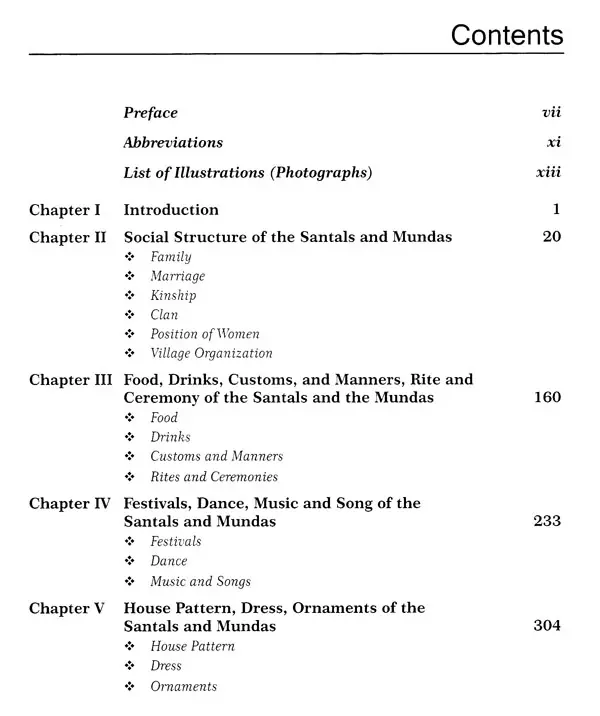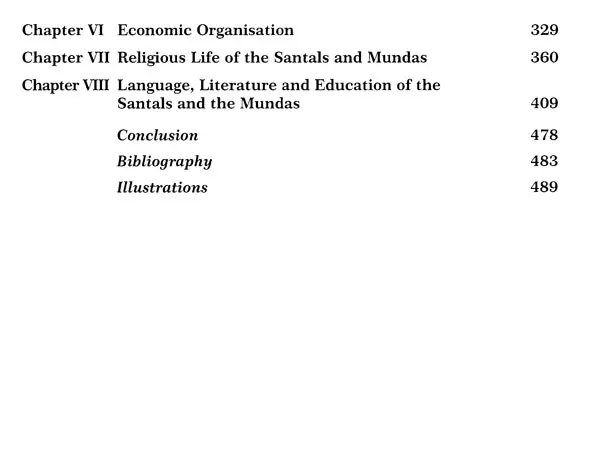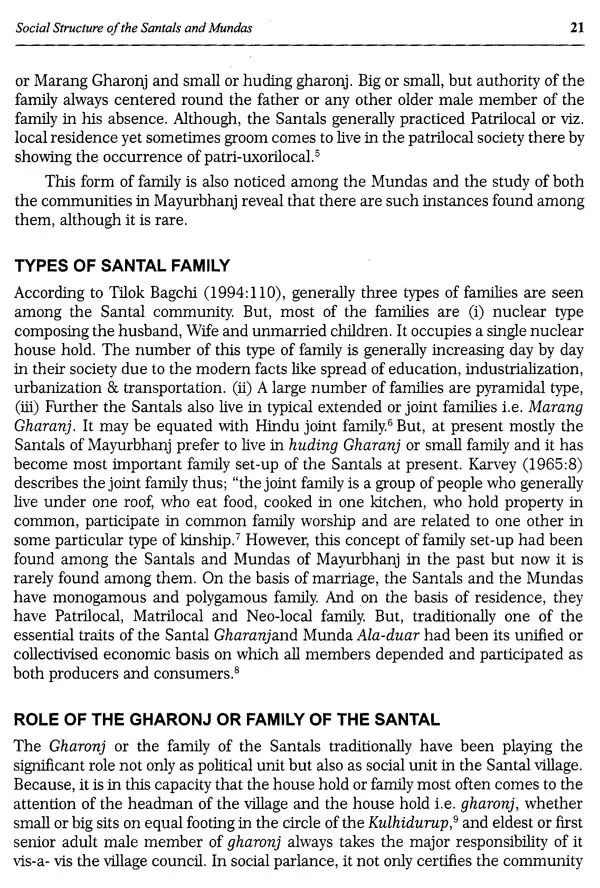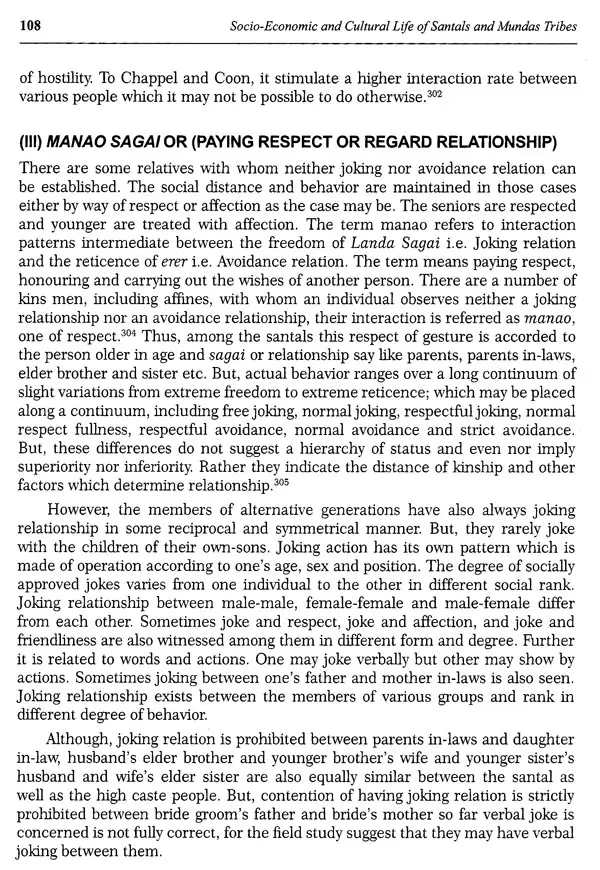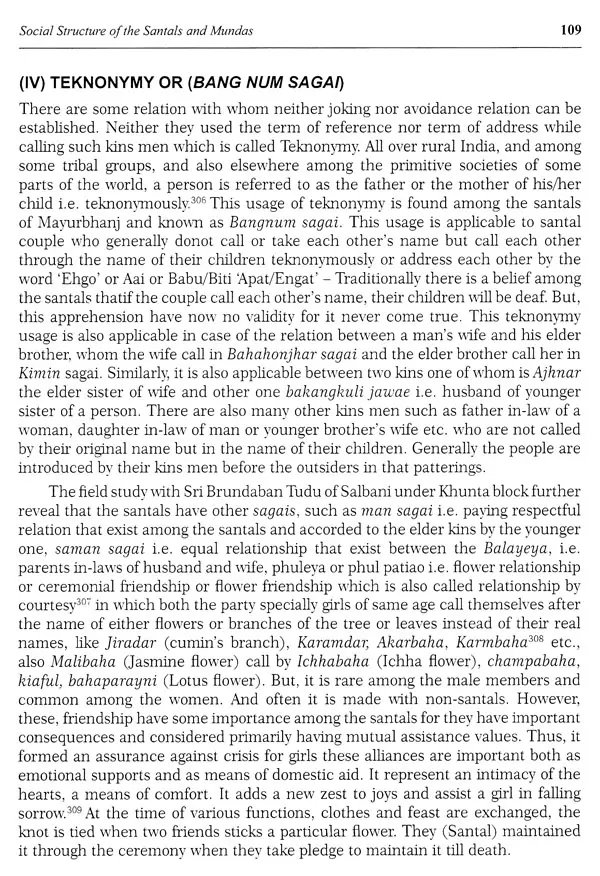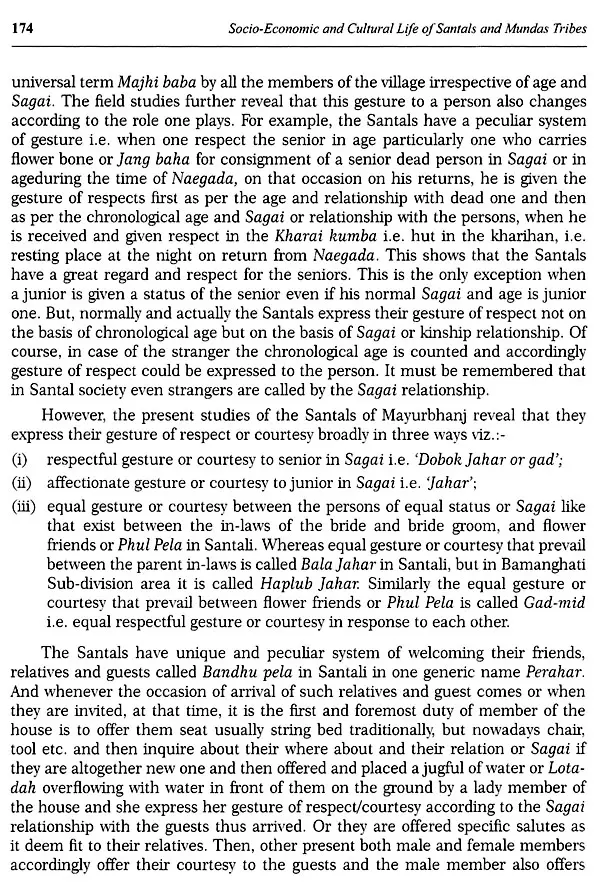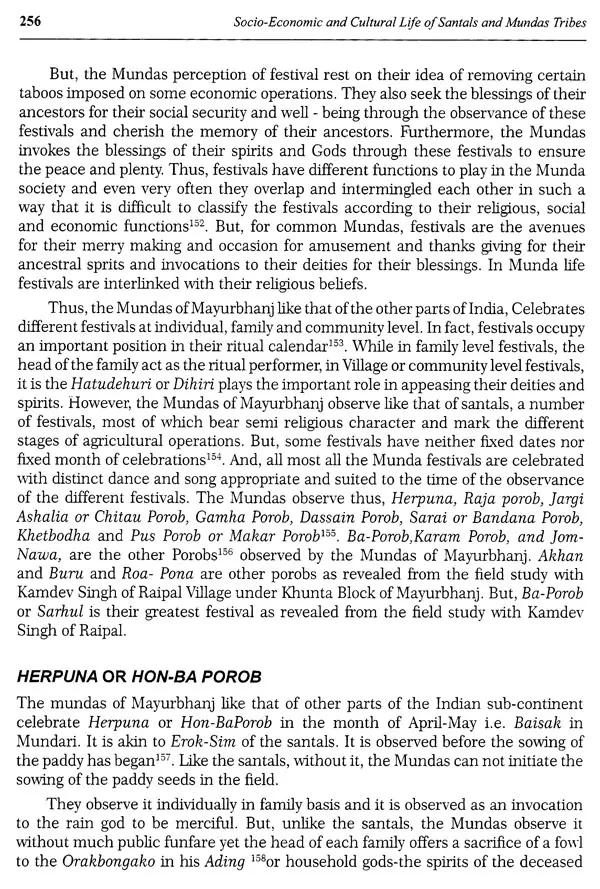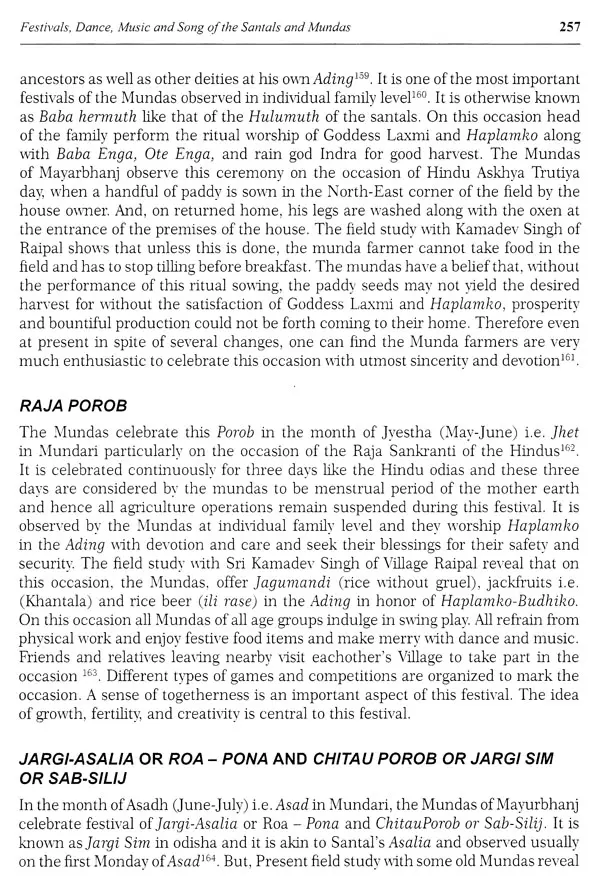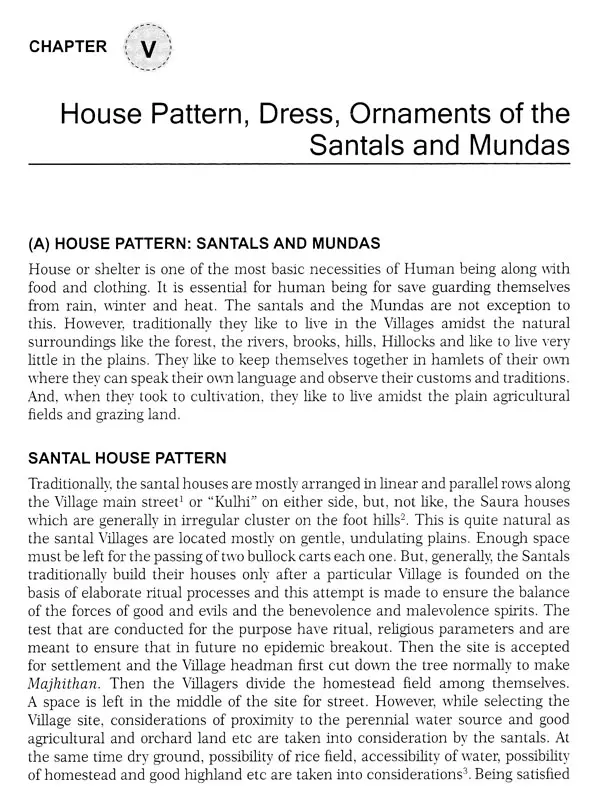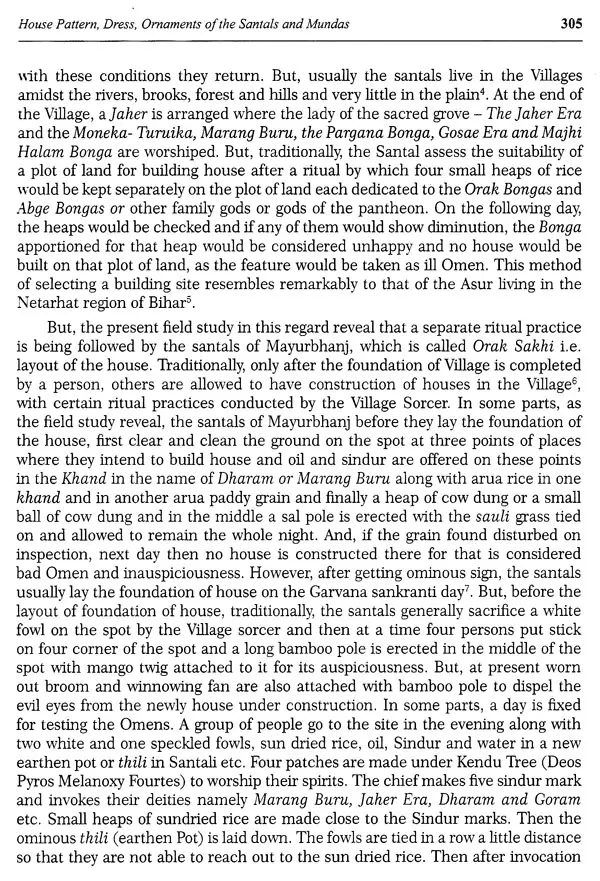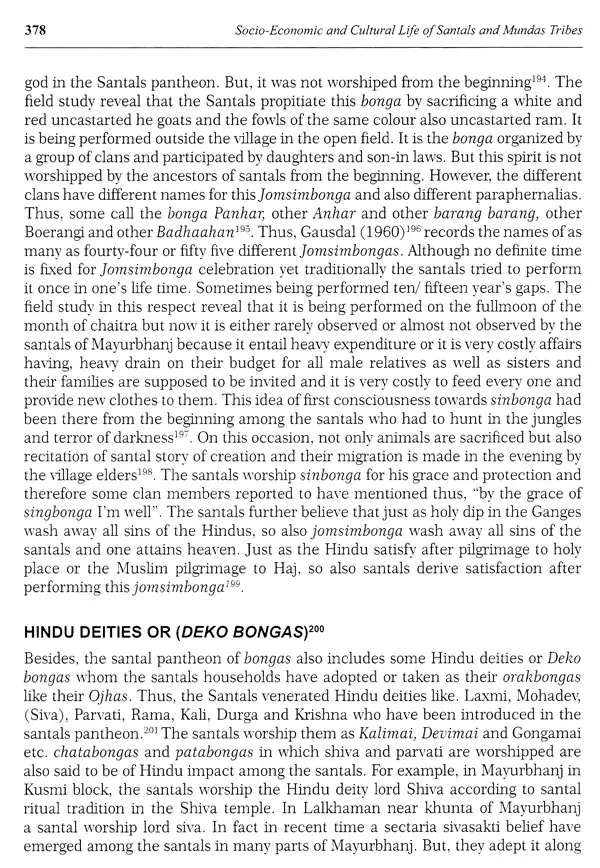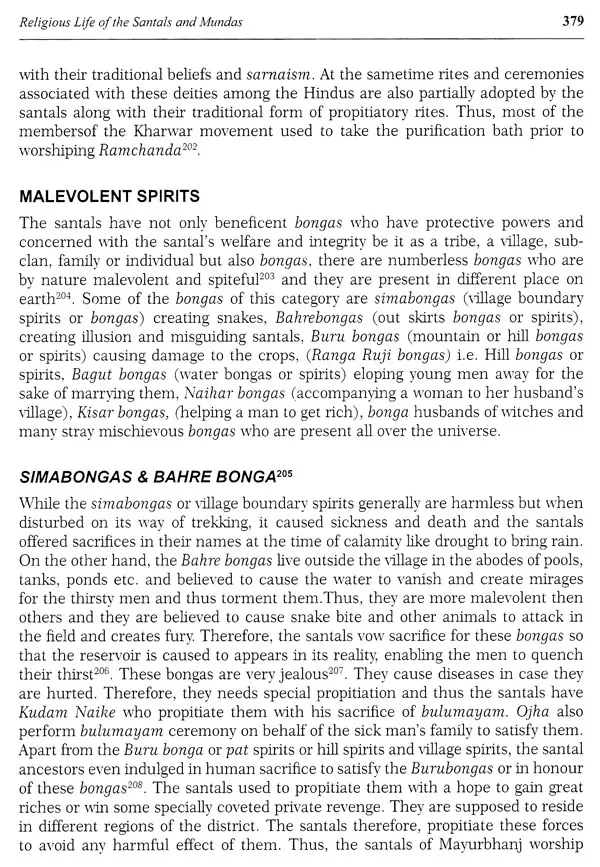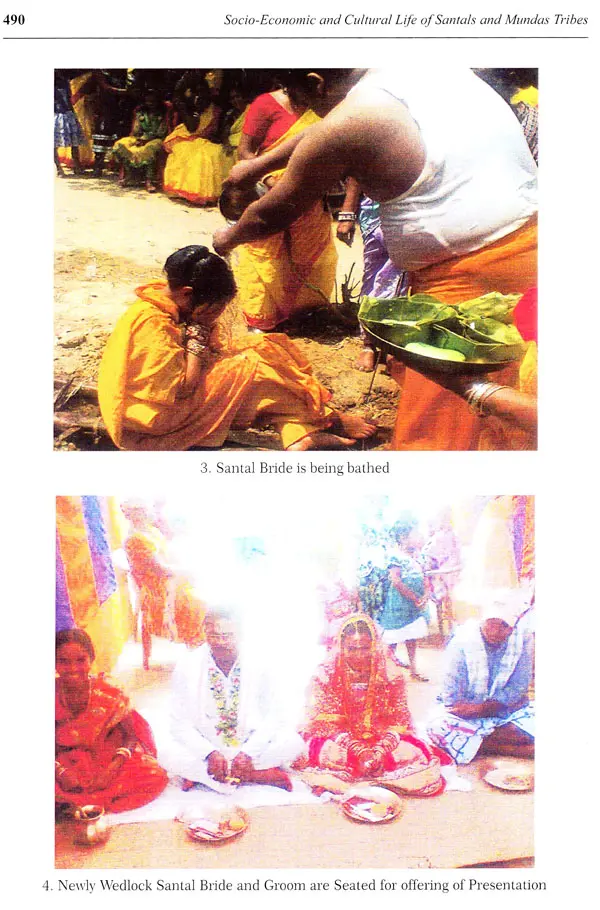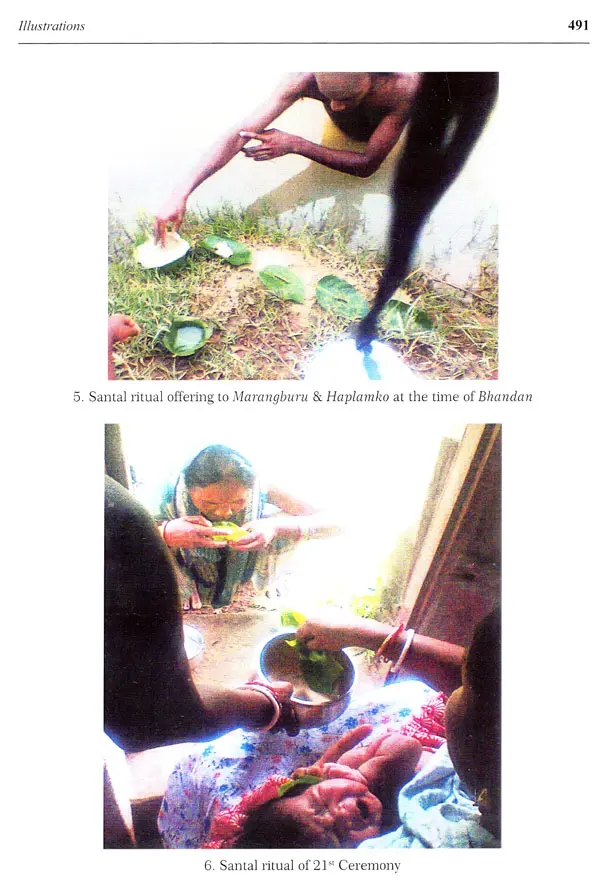
Socio-Economic and Cultural Life of Santals and Mundas Tribes
Book Specification
| Item Code: | UAP323 |
| Author: | Chintamani Tudu |
| Publisher: | Maya Publishing House, Delhi |
| Language: | English |
| Edition: | 2022 |
| ISBN: | 9789391642013 |
| Pages: | 512 (Throughout Color Illustrations) |
| Cover: | HARDCOVER |
| Other Details | 10.00 X 7.50 inch |
| Weight | 1.11 kg |
Book Description
The Book entitled "Socio-Economic and Cultural Life of Santals and Mundas Tribes makes an indepth study of two major tribes of India. It makes an analytical study on the life of Santals and Mundas Tribes mainly through observations, field study and primary and secondary sources. It analyses the basic concepts of both the tribes pertaining to their Socio-economic and Cultural aspects. In this book analysis of their origin, sojourn, original homeland and dispersal has been made. It comprehensively deals with the comparative study of both the tribes pertaining to their socio-economic and cultural life. While dealing with these tribes their myths, folk songs, folk tales and inscriptions have been taken into consideration. A long with socio-economic and cultural life, the different theories on their origin and original homeland have been critically examined. In the analysis of social structure of both the tribes, a valuable information have been collected by examining their settlement and housing pattern, family and marriage organizations, kinship and clan institutions, birth and death rituals, position of women and their role in the society. Their food and drinks, dress and ornaments and hair style tattoo mark have been examined. The significant of their religion and religious beliefs have been studied in detail. The cultural aspects pertaining to their song, dance, music and musical instruments have been highlighted. It also throws light on invention of their scripts and development of language and literature during the colonial and post-colonial period. It also deals with the development of education among these tribes in the post-Independent eras. Various kinds of social evils search as alcoholism, witch crafts and blind belies and its remedies have been suggested in this work. And a notable aspect is that the work throws light on the role of government organization and their different schemes upon these tribes. In this work, sincere efforts have been made to analyse the various aspects of these tribes in simple and lucid manner to make it worth reading.
Dr. Chintamani Tudu Ex-Reader in History and Principal Govt. Women's College, Baripada. The Author of this Book is born in the village Podadiha under the jurisdiction of Mayurbhanj district of Odisha on 11/07/1959. He pursued his academic career mostly in the capital city of Odisha i.e. Bhubaneswar and had good academic career. He had his M.A. in history from Utkal University in 1982 with specialisation in Modern Indian History since November 1983, he has served different govt. and Autonomous Colleges of Odisha. He obtained his Ph.D degree on the topic "The Santals and The Mundas of Mayurbhanj A comparative study of the socio-economic and cultural life from north Odisha University, Baripada (now Sri Ram Chandra Bhanjadeo University) in 2016. He also served as member of the affiliation committee of North Odisha University. He is also member of SRC in history of SCBD University, Baripada. Since this book has been written with wide field study, it will cater to the need of both common readers and researchers of the coming generation.
In human history. India having the largest number of tribes as compared to any other country, presents a panorama of many cultures. It provide a fascinating background for the ethnological study. According to the Anthropological Survey of India, there are as many as 461 tribal communities out of which 174 were identify as sub-groups. 212 are found in different parts of India. Out of these communities. the Santals and Mundas tribes constitute one of the major tribes of India. They live in a region which comprises Jharkhand. West-Bengal, Bihar, Odisha, Assam states also known as Chotnagapur plateau. They occupy a very prominent position in India for their distinct cultural identity. They possessed a very rich and old cultural heritage dating back to an early period. They are knit together by bond of fellow feelings and brotherly hood and are very proud of their heritage.
Both the tribes belong to same racial stock and have sprung up from common linguistic stock, Mundari. They have their typical traits which are more or less the same type but also distinct from each other in some respects. But with the march of time and contact with the non-tribal Hindu people, the Santals and the Mundas have lost some of their typical tribal characteristics. As a consequence, many of the customs and cultural traits of non-tribal specially Hindus, penetrated and permeated deep within their societal form. For example, in the Munda community a section of them severed themselves from the original Munda community and they formed a separate group called Bhumij. Thus, a process of acculturisation have been felt among them. Therefore. India has created a great interest in the study of socio-economic and cultural life of Santals and Mundas tribes in recent times.
No pioneering works specially a comparative study of Santals and Mundas tribes of India have been undertaken so far in pre and post independent era. Being a part of the Santal community. I have made an humble attempt at studying the socio-economic and cultural life of Santals and Mundas tribes of India. Efforts have been made here to present the comparative analysis of various aspects involving both the communities in the socio-economic and cultural field. While presenting these accounts, care has been taken to focus on the distinct and contrasting characteristics found among them. Book's Contents and Sample Pages

